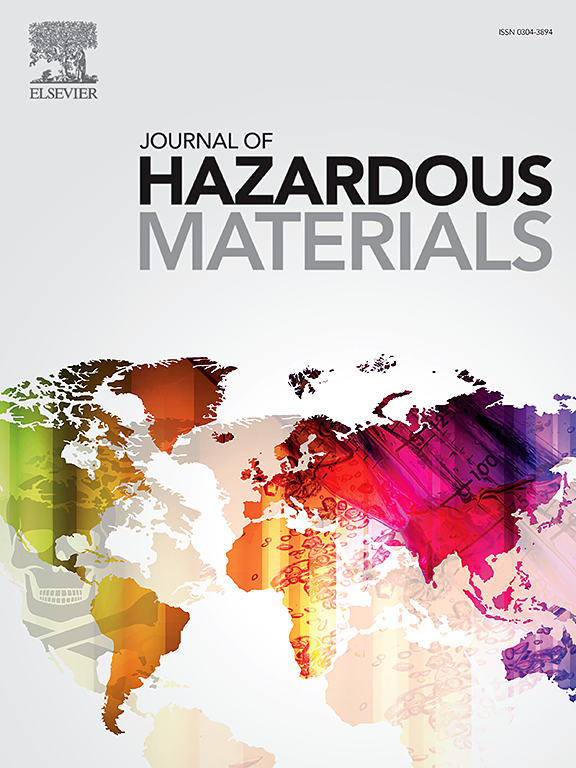Enhanced Volatile Methylsiloxanes Degradation through Designed Enzyme Local Electric Field
IF 12.2
1区 环境科学与生态学
Q1 ENGINEERING, ENVIRONMENTAL
引用次数: 0
Abstract
Widespread application of man-made chemicals volatile methylsiloxanes (VMS) has caused a variety of environmental and health issues. Enzymatic degradation of VMS can be a promising eco-friendly solution. Recent advances in the directed evolution of cytochrome P450BM3 have shown significant potential for VMS degradation. However, the current catalytic efficiency remains insufficient for industrial application. Here, taking the LSilOx4 mutant-catalyzed degradation of hexamethyldisiloxane as an example, we decipher the enzymatic degradation mechanism with advanced multiscale simulations. The successful degradation of VMS involves three main processes, with the rate-determining step corresponding to hydrogen atom transfer in the enzyme-catalyzed C-H hydroxylation process, which holds an average energy barrier of 17.7 kcal·mol-1. Our findings demonstrate that the progressive evolution of the internal electric field (IEF) aligns with the experimentally observed increase in activity from wild-type P450BM3 to engineered variants (e.g. LSilOx4). This correlation is further evidenced by comparisons with results from oriented external electric field (EEF) calculations. Notably, the catalytic effect of the oriented EEFs is preferentially achieved through stronger stabilization of the transition state compared to the reactant. We anticipate that our insights will pave a way for the rational design of enzymes through the evolution of their internal electric field.

设计酶局部电场增强挥发性甲基硅氧烷降解
挥发性甲基硅氧烷(VMS)的广泛应用引起了各种环境和健康问题。酶降解VMS是一种很有前途的环保解决方案。细胞色素P450BM3定向进化的最新进展显示出VMS降解的巨大潜力。然而,目前的催化效率还不足以实现工业应用。本文以LSilOx4突变体催化降解六甲基二硅氧烷为例,通过先进的多尺度模拟,揭示了酶促降解机理。VMS的成功降解包括三个主要过程,其中速率决定步骤对应于酶催化的C-H羟基化过程中的氢原子转移,该过程的平均能垒为17.7 kcal·mol-1。我们的研究结果表明,内部电场(IEF)的逐步进化与实验观察到的从野生型P450BM3到工程变体(如LSilOx4)的活性增加相一致。通过与定向外电场(EEF)计算结果的比较,进一步证明了这种相关性。值得注意的是,与反应物相比,定向EEFs的催化效果优先通过更强的过渡态稳定化来实现。我们预计,我们的见解将为酶的合理设计铺平道路,通过其内部电场的进化。
本文章由计算机程序翻译,如有差异,请以英文原文为准。
求助全文
约1分钟内获得全文
求助全文
来源期刊

Journal of Hazardous Materials
工程技术-工程:环境
CiteScore
25.40
自引率
5.90%
发文量
3059
审稿时长
58 days
期刊介绍:
The Journal of Hazardous Materials serves as a global platform for promoting cutting-edge research in the field of Environmental Science and Engineering. Our publication features a wide range of articles, including full-length research papers, review articles, and perspectives, with the aim of enhancing our understanding of the dangers and risks associated with various materials concerning public health and the environment. It is important to note that the term "environmental contaminants" refers specifically to substances that pose hazardous effects through contamination, while excluding those that do not have such impacts on the environment or human health. Moreover, we emphasize the distinction between wastes and hazardous materials in order to provide further clarity on the scope of the journal. We have a keen interest in exploring specific compounds and microbial agents that have adverse effects on the environment.
 求助内容:
求助内容: 应助结果提醒方式:
应助结果提醒方式:


